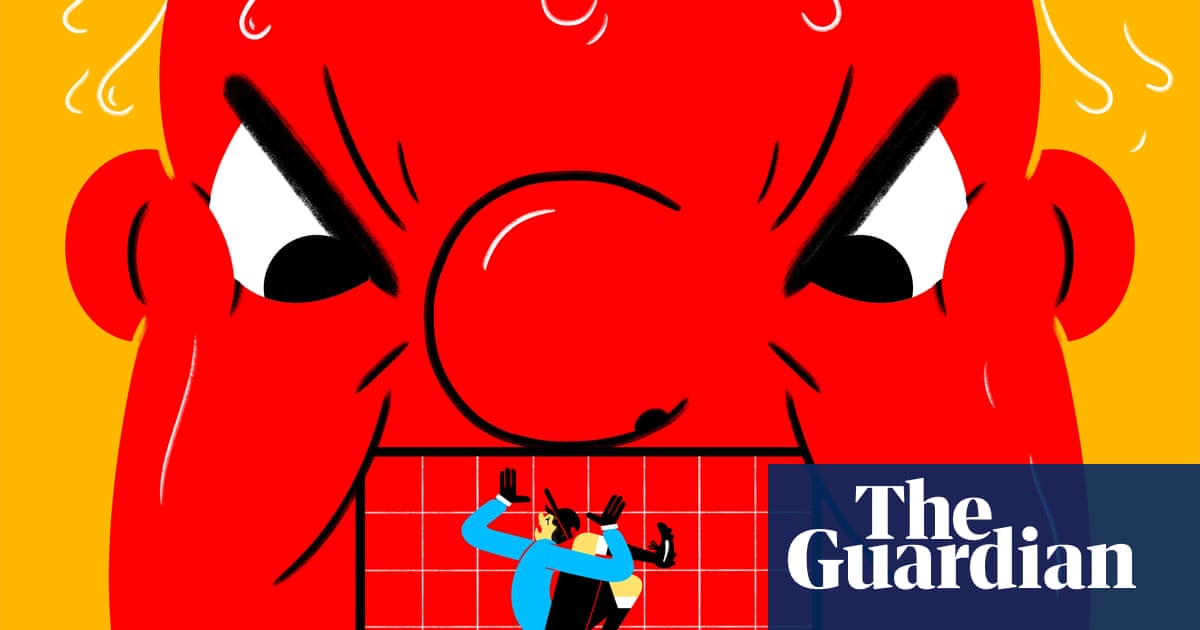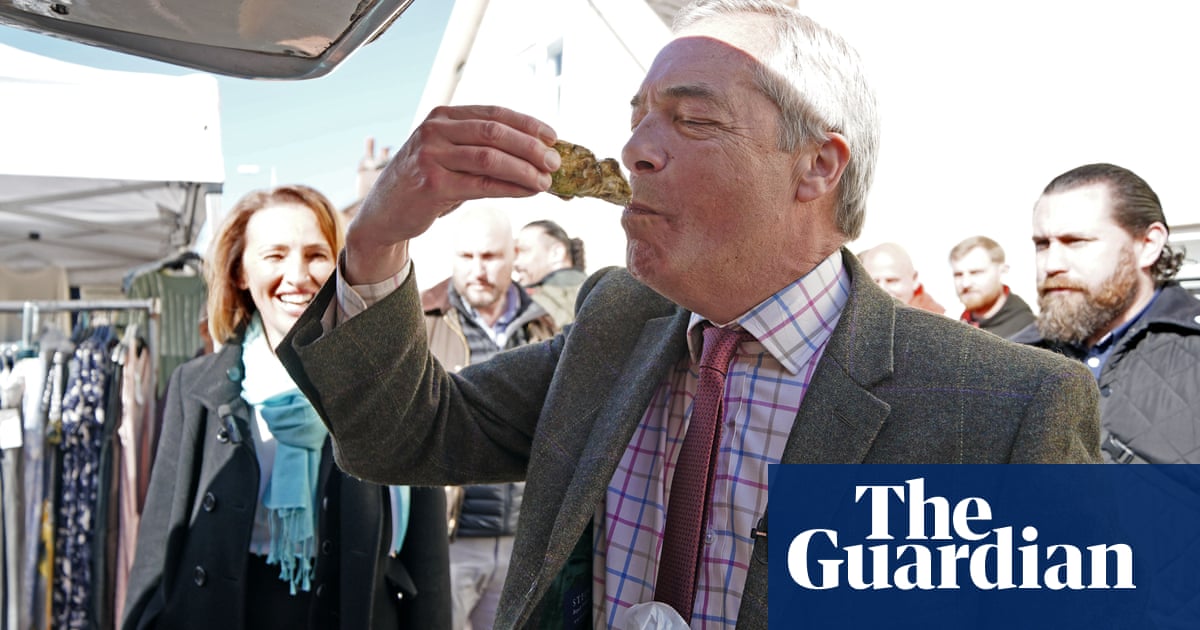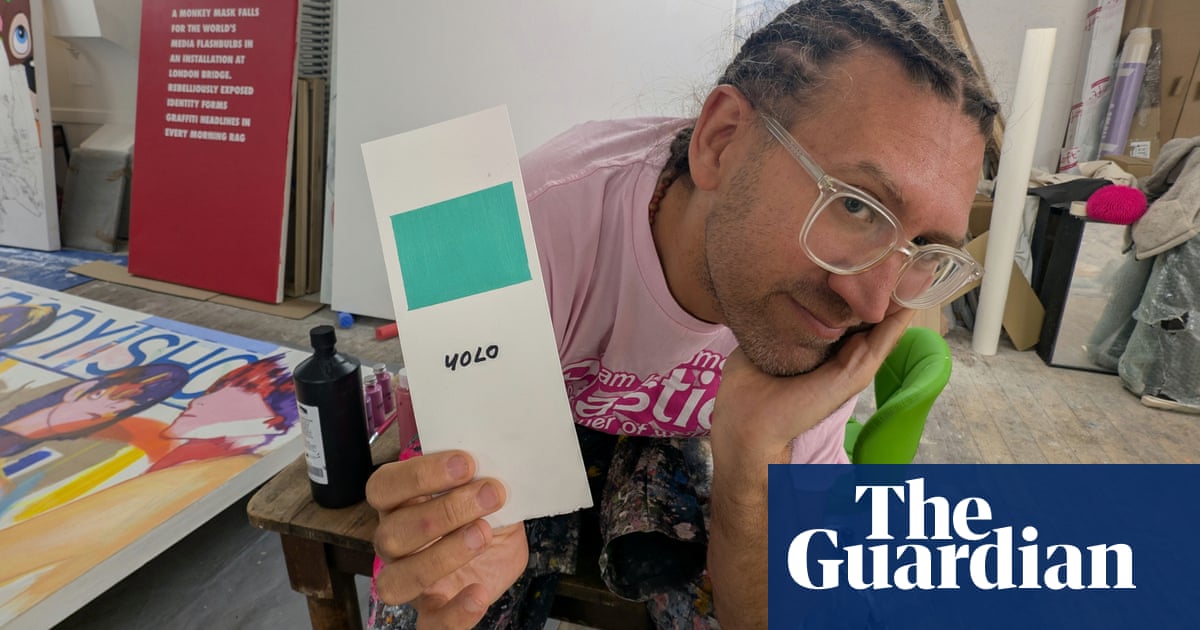The Stroud-raised artist Dan Guthrie had just come out of a meeting about what to do with the “racist” blackboy clock that has been present in his home town for 240 years, when he had a thought. Why not just destroy it?
The clock that sits on the side of a former school has been at the centre of a culture war in Stroud since 2021, when Guthrie asked the local council why the figure, who has large red lips and is wearing a golden leaf skirt, was still present in the town.
He said: “We’re in a cost of living crisis and the cost of removing this object and putting it in a museum would come to about £30,000. Why would you spend that much money to keep a racist object alive in perpetuity – why not destroy it?”
That idea is at the heart of a new piece Guthrie has created at Spike Island in Bristol. During Empty Alcove / Rotting Figure, two video pieces show an empty space after the clock and the figure have been removed, as the sound of car traffic, birdsong and children playing is heard in the background.
In the other video, it is slowly destroyed. “It’s a process I’ve called ‘radical unpreservation’,” adds Guthrie. “It’s like controlled demolition.”
In reality the clock and the figure are still present in Stroud, despite widespread support for their removal. In summer 2021, the council launched a consultation and received more than 1,600 responses. Nearly 80% of respondents said the clock should be removed, while 22% thought it should remain in place.

In April 2022, district councillors agreed to pursue removal of the clock and attempt to place it in a local museum, but the situation was complicated because the clock is not owned by the council but in the possession of a trust, which restored the object in 2004.
“If the trust wants to remove it, the decision has to be signed off by Historic England, who in turn need to know where it is going to go. But local museums only want to accept an item with no strings attached – so it’s a huge catch-22,” said Guthrie.
The town’s former Conservative MP, Siobhan Baillie, also waded into the debate and criticised local anti-racist campaigners, saying “a certain minority of people with loud voices have an unquenchable desire to be constantly finding things to be outraged at” in a statement published in the local press and on her website.
After the consultation period and the council’s decision to pursue the clock’s removal, Guthrie was warned by anti-fascist groups that the far-right group Britain First were planning to doorstep him. They didn’t turn up, but the threat showed how charged the debate had become.
Stroud district council told the Guardian that it had no legal authority to remove the objects. “The conversations about the clock and the systemic issues of racial injustice and discrimination facing people from many different backgrounds in the Stroud district should continue to help ensure our local area is inclusive and welcoming to everyone,” a spokesperson added.
“The council continues to explore moving the clock as well as acting on other initiatives that came out of the consultation and recommendations.”
after newsletter promotion
Although the removal of the clock and figure isn’t possible at present, the council has installed a plaque which explains the object’s history, but even that wasn’t straightforward. “We had to have a meeting about sustainability but also make it hard to destroy. It’s got anti-graffiti covering,” says Guthrie. “The fact you have to think about that is telling.”

Dr Simon Opher, Stroud’s Labour MP, who unseated Baillie at the 2024 general election, told the Guardian that the blackboy clock was “undeniably a racist piece of iconography” and should be taken down.
He added: “I recognise that it is of historical interest, but it would be better preserved, explained and contextualised in a museum environment rather than on the streets of a town where, sadly, racism lies very close to the surface, and its continued presence does nothing for local people.”
But Guthrie isn’t convinced about the idea of moving the clock and the figure into a museum. “It becomes a spectacle again,” he says. “The clock doesn’t tell the time, the figure doesn’t ring the bell. It was rotting in the 1970s and in the 00s; why are we keeping it alive? Let it rot away. The object doesn’t have to take up space in order for us to think about it and reflect on it.”
-
Dan Guthrie, Empty Alcove / Rotting Figure opens at Spike Island, Bristol on Saturday 8 February until 11 May 2025

.png) 2 months ago
31
2 months ago
31













































